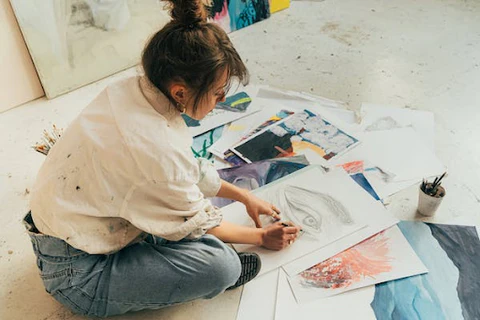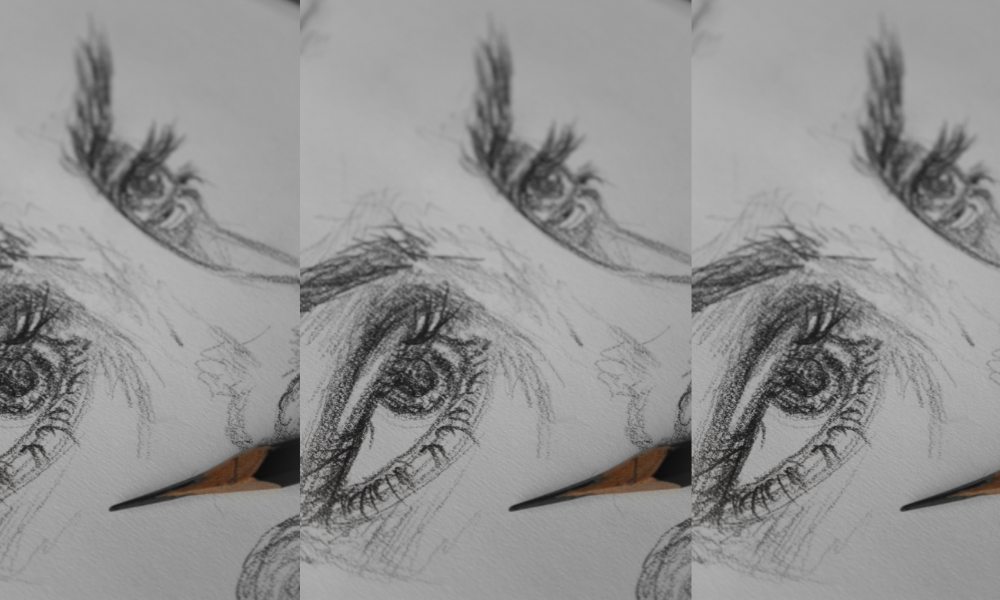Art has been a means of expression for centuries, continually evolving over time. From charcoal sketches to digital illustrations, artists constantly discover new methods to showcase their creativity and bring their ideas to life. In this blog post, we will delve into the differences between sketching and drawing, and explore how each technique can be used to create stunning pieces of art.
Sketching

Definition
Sketches are rough and unrefined, typically capturing the fundamental shapes, lines, and proportions of a subject. This technique is a quick, loose form of drawing used to grasp the essence of a subject or draft a preliminary idea for future artwork. Sketches are usually created with a light touch and are not meant to be completed pieces of art.
Characteristics of Sketches
Sketches typically have a loose, spontaneous quality. They may appear rough and incomplete, using lines and shading to capture the basic forms and shapes of the subject. Often created with a pencil or charcoal, sketches involve light, loose lines to convey the essence of the subject.
Techniques and Tools Used for Sketching
Sketching can be accomplished using a variety of tools, such as pencils, charcoal, markers, and digital devices. Some artists favor mechanical pencils or lead holders, while others opt for graphite pencils. Many artists use sketchbooks to jot down ideas and experiment with different techniques.
Benefits of Sketching
Sketching is a fantastic method for swiftly capturing ideas and concepts, often serving as the foundation for a more polished piece. It is also an excellent way to practice and refine drawing skills, providing an opportunity to experiment with various techniques and styles. Additionally, sketching helps capture the essence of a subject, aiding the artist in gaining a deeper understanding of it and how it can be translated into a final work of art.
Drawing

Definition
Drawing is the art of producing images or designs on a flat surface, such as paper or canvas, using tools like pencils, pens, or charcoal. Drawings can vary from simple sketches to intricately detailed artworks. Unlike sketches, drawings like pencil portraits are usually more finished and refined, with an emphasis on capturing the subject’s likeness or creating a visually stunning piece.
Characteristics of Drawings
Drawings are usually distinguished by their refined and polished appearance. They often contain greater detail, focusing on capturing the subject’s likeness or creating an aesthetically pleasing artwork. Drawings can be produced using various media, including pencils, charcoal, ink, and digital tools.
Techniques and Tools Used for Drawing
Drawing can be performed with a variety of tools and techniques, including pencils, charcoal, ink, and digital devices. The choice of tool depends on the artist’s preference, the type of drawing, and the desired effect. Pencils are favored for detailed drawings due to their fine control and subtle shading capabilities. Charcoal, with its soft and smudgy texture, is often used for more expressive and loose drawings. Ink is chosen for bold, graphic illustrations. Digital tools like tablets and styluses offer extensive possibilities, such as the ability to undo mistakes, work with layers, and experiment with different colors and textures.
Benefits of Drawing
Drawing is an effective method for creating finished artworks, with artists dedicating time and effort to producing well-defined images. Drawings can capture subjects with remarkable detail and accuracy, making them ideal for intricate subjects like portraits or landscapes. Additionally, drawing enhances an artist’s technical skills, such as shading and crosshatching, to add depth and dimension. It also fosters creativity, allowing artists to experiment with various techniques and styles, and explore new subjects and themes.
Sketching vs Drawing: How They Differ
Speed
The primary contrast between sketching and drawing lies in their pace. Sketching is usually swift, with the artist aiming to grasp the subject’s essence, whereas drawing involves a slower and more deliberate approach, concentrating on crafting a detailed image.
Detail
Another distinction between sketching and drawing is the level of detail. Sketches are often loose and spontaneous, concentrating on the primary forms and shapes of the subject. In contrast, drawings are more finished and polished, with the artist meticulously attending to details and the overall composition of the piece.
Purpose
The primary aim of sketching is to capture the essence of a subject or draft a rough concept for future artwork. Conversely, drawing focuses on producing a finished, polished piece or studying and refining the anatomy and proportions of a subject.
Final Thoughts
Sketching and drawing are essential techniques in the art world, each offering unique benefits and applications. Whether you aim to quickly capture an idea or produce a finished piece, both sketching and drawing can help you reach your artistic goals. Understanding the differences between these techniques and using each effectively is crucial in your creative pursuits.




